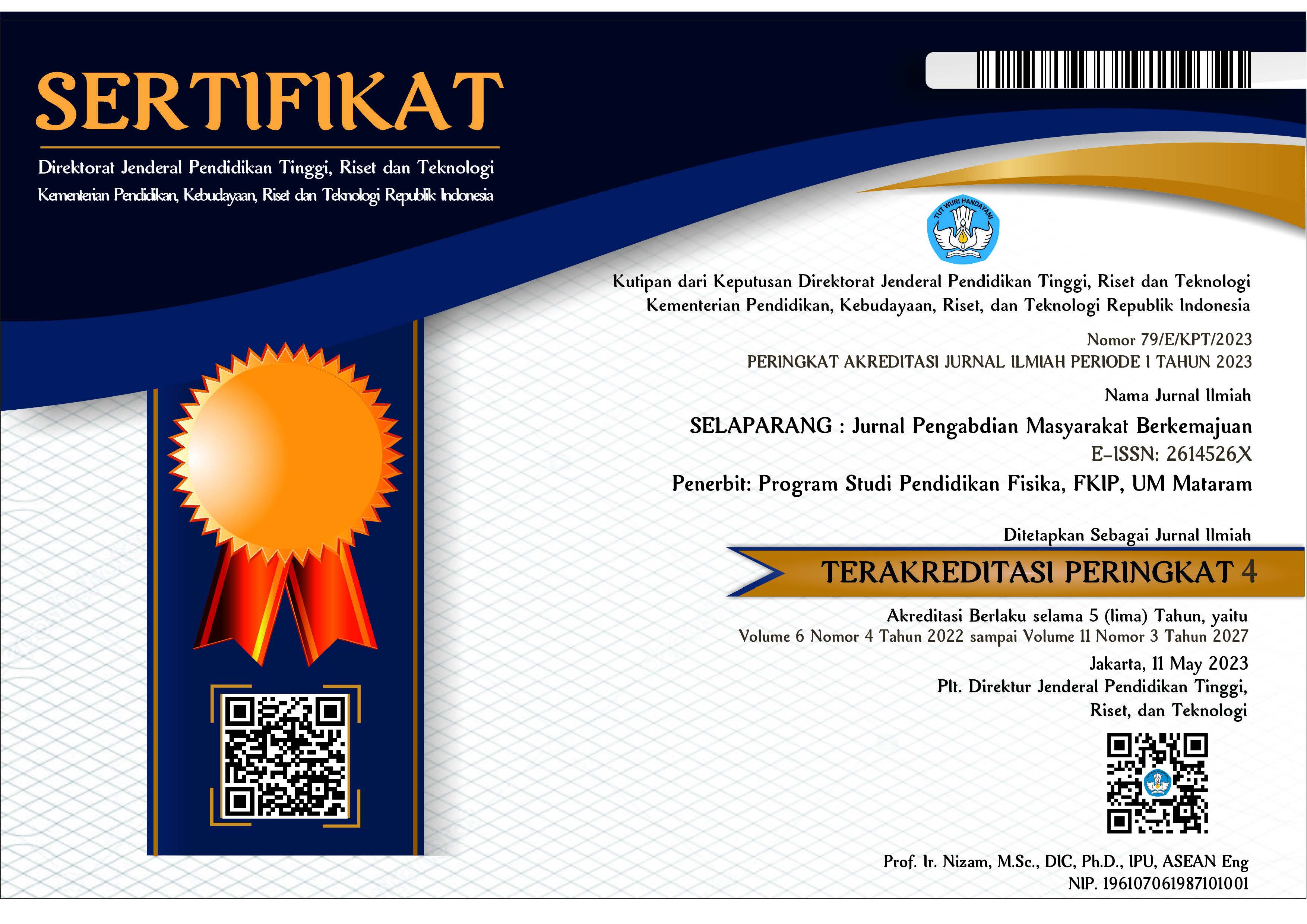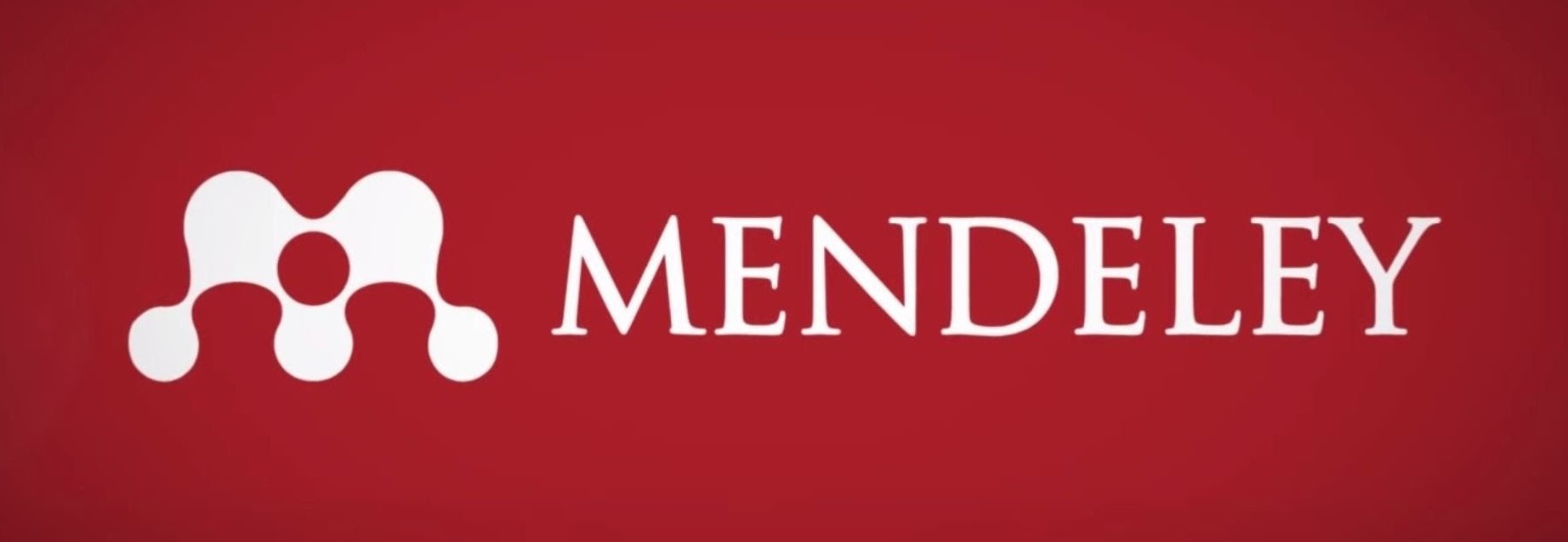IMPLEMENTASI MICROBUBBLE GENERATOR TIPE ORIFICE DENGAN PIPA POROUS DAN PIPA DISTRIBUTOR UNTUK AERASI KOLAM IKAN
Abstract
ABSTRAK
Indonesia memiliki potensi produksi akuakultur yang besar. Pada sektor perikanan, budidaya ikan diupayakan untuk memanfaatkan sumber daya air terbatas. Faktor yang memengaruhi kualitas dan pertumbuhan ikan adalah oksigen terlarut (dissolved oxygen). Microbubble generator (MBG) menjadi solusi untuk menyelesaikan masalah oksigen terlarut (DO) dalam air. Pengabdian ini akan melakukan modifikasi MBG tipe orifice dengan pipa porous dan pipa distributor. Selanjutnya mengkaji tentang pengaruh pipa distributor dengan variasi parameter pengujian terhadap stabilitas harga DO yang seragam pada air di kolam ikan. Pelaksanaannya akan melibatkan proses perancangan alat yang menghasilkan drawing design. Maka akan diteruskan ke proses pembuatan alat, setelah itu diuji fungsinya. Tahap akhir proses pengujian dalam air di kolam tanpa ikan untuk memperoleh harga DO yang stabil dan seragam. Dengan tujuan masyarakat dapat mengetahui, mengoperasikan, merawat, membuat alat secara swadaya (mandiri). Estimasi masyarakat mengetahui dari hasil kegiatan ini berkisar 84%. Hal ini ditinjau dari saat di lapangan dan taha evaluasi/monitoring telah dilakukan. Selain itu masyarakat mendapatkan dampak perekonomian yang positif, khususnya untuk komunitas peternak ikan skala kecil dan menengah yang tidak memiliki fasilitas seadanya.
Kata kunci: dissolved oxygen; microbubble generator; orifice type; drawing design.
ABSTRACT
Indonesia has a large potential aquaculture production. In the fisheries sector, fish farming is sought to utilize limited water resources. Factors that affect the quality and growth of fish are dissolved oxygen (dissolved oxygen). Microbubble Generator (MBG) is the solution to resolve dissolved oxygen problems (DO) in water. This service will modify the ORIFICE type MBG with Porous pipes and distributor pipes. Furthermore, examine the influence of distributor pipes with variations in testing parameters on the stability of the price of DO uniformly on water in the fish pond. The implementation will involve the design process that produces drawing design. Then it will be forwarded to the tool making process, after which it is tested. The final stage of the testing process in water in a pond without fish to get a stable and uniform do price. With the aim of the community can know, operate, care for, make tools in self-help. Community estimates knowing from the results of this activity ranging from 84%. It is reviewed from the moment in the field and the evaluation/monitoring has been done. In addition, the community gets a positive economic impact, especially for small and medium-sized fish farmers who do not have makeshift facilities.
Keywords: dissolved oxygen; microbubble generator; orifice type; drawing design.
Keywords
Full Text:
PDFReferences
Adawyah, R., (2006). Pengolahan dan Pengawetan Ikan. 1st ed. Jakarta: Bumi Aksara.
Afisna, L. P. & Juwana, W. E., (2020). Aplikasi Microbubble Generator Porous-Venturi pada Pengolahan Air Limbah Buatan. Jurnal Kurvatek, V(1), pp. 11-18.
Afrianto, E. & Liviawaty, E., (1989). Pengawetan dan Pengolahan Ikan. 1st ed. Jakarta: Kanisius.
Alasavar, C., Shahidi, F., Miyashita, K. & Wanasundara, U., (2011). Handbook of Seafood Quality, Safety, and Health Applications. 1st ed. United Kingdom: Blackwell Publishing Ltd..
Boyd, C. E., (1990). Water Quality in Ponds for Aquaculture. 1st ed. Albama: Birmingham Publishing.
Boyd, C. E. & Gautier, D., (2000). Effluent Composition and Water Quality Management. Global Aquaculture Advocate, III(5), pp. 61-66.
Boyd, C. E. & Tucker, C. S., (1998). Pond Aquaculture Water Quality Management. 1st ed. New York: Springer Science.
Darmono, (2001). Lingkungan Hidup dan Pencemaran, Hubungannya dengan Taksikologi Senyawa Logam. 1st ed. Jakarta: UI Press.
Effendic, M. I., (2002). Biologi Perikanan. 3th ed. Yogyakarta: Yayasan Pustaka Nusantara.
Firman, S. W., Nirmala, K., Supriyono, E. & Rochman, N. T., (2019). Evaluasi Kinerja Pembangkit Gelembung Mikro terhadap Respons Fisiologis Ikan Nila Oreochromis Niloticus (Linnaeus, 1758) dengan Kepadatan Berbeda pada Sistem Resirkulasi. Jurnal Ektiologi Indonesia, XIX(3), pp. 425-436.
Liew, K. C. S. et al., (2020). Porous Ventrui-Orifice Microbubble Generator for Oxygen Dissolution in Water. Processes, VIII(1266), pp. 1-15.
Lim, J.-Y., Kim, H.-S., Park, S.-Y. & Kim, J.-H., (2020). Simultaneous Nitrification and Denitrification by Using Ejector Type Microbubble Generator in a Single Reactor. Enviromental Engineering Research, VV(2), pp. 251-257.
Mulyana, Y. & Dermawan, A., (2008). Konservasi Kawasan Perairan Indonesia bagi Masa Depan Dunia. 2nd ed. Jakarta: Departemen Kelautan & Perikanan.
Naeem, S. et al., (2020). Parameters Optimization of Catalytic Tubular Nanomembrane-Based Oxygen Microbubble Generator. Mircomachines, XI(643), pp. 1-12.
Onhari, H., (2000). Swirling Type Micro-bubble Generating System. 2nd ed. United State: US Patent.
Pambudiarto, B. A., Mindaryani, A., Deendarlianto & Budhijanto, W., (2020). Evaluation of the Effect of Operating Parameters on the Performance of Orifice/Porous Pipe Type Micro-bubble Generator. Journal Engineering Technology Science, LII(2), pp. 196-207.
Purnomo, S. S., Sumarjo, J. & Suci, F. C., (2020). Rancang Bangun Microbubble Generator Tipe Orifice dengan Pipa Porous untuk Aerasi Kolam Ikan. Jurnal Infomatek, XXII(1), pp. 41-50.
Rosariawari, F., Wahjudijanto, I. & Rachmanto, T. A., (2020). Peningkatan Efektifitas Aerasi dengan Menggunakan Micro Bubble Generator (MBG). Jurnal Envirotek, VIII(2), pp. 1-4.
Rulyov, N. N., Filippov, L. O. & Kravchenko, O. V., (2020). Combined Microflotation of Glass Beads. Colloids and Surfaces A, DXCVIII(1), pp. 1-7.
Sadatomi, M., Kawahara, A., Kano, K. & Ohtomo, A., (2005). Performance of New Microbubble Generator with a Sprical Body in Flowing Water Tube. Experimentall Thermal and Fluid Science, XXIX(1), pp. 615-623.
Sadatomi, M., Kawahara, A., Matsura, H. & Shikatani, S., (2012). Microbubble Generation Rate and Bubble Dissolution Rate Into Water by a Simple Multi Fluid Mixer with Orifice and Porous Tube. Experimental Thermal and Fluid Science, XLI(1), pp. 23-30.
Sadatomi, M., Kawahara, A., Matsuyama, F. & Kimura, T., (2007). An Advanced Microbubble Generator and its Application to a Newly Developed Bubble-Jet Type Airlift Pump. Multiphase Science and Technology, XIX(1), pp. 323-342.
Sondita, M. F. A. & Solihin, I., (2006). Teknologi Perikanan Tangkap yang Bertanggungjawab. 1st ed. Bogor: Intramedia.
Sutardjo, S. C., (2012). Kelautan Indonesia. 1st ed. Jakarta: Pustaka Cidesindo.
DOI: https://doi.org/10.31764/jpmb.v4i2.4392
Refbacks
- There are currently no refbacks.

This work is licensed under a Creative Commons Attribution-ShareAlike 4.0 International License.
______________________________________________________
Jurnal Selaparang
p-ISSN 2614-5251 || e-ISSN 2614-526X
EDITORIAL OFFICE:



















